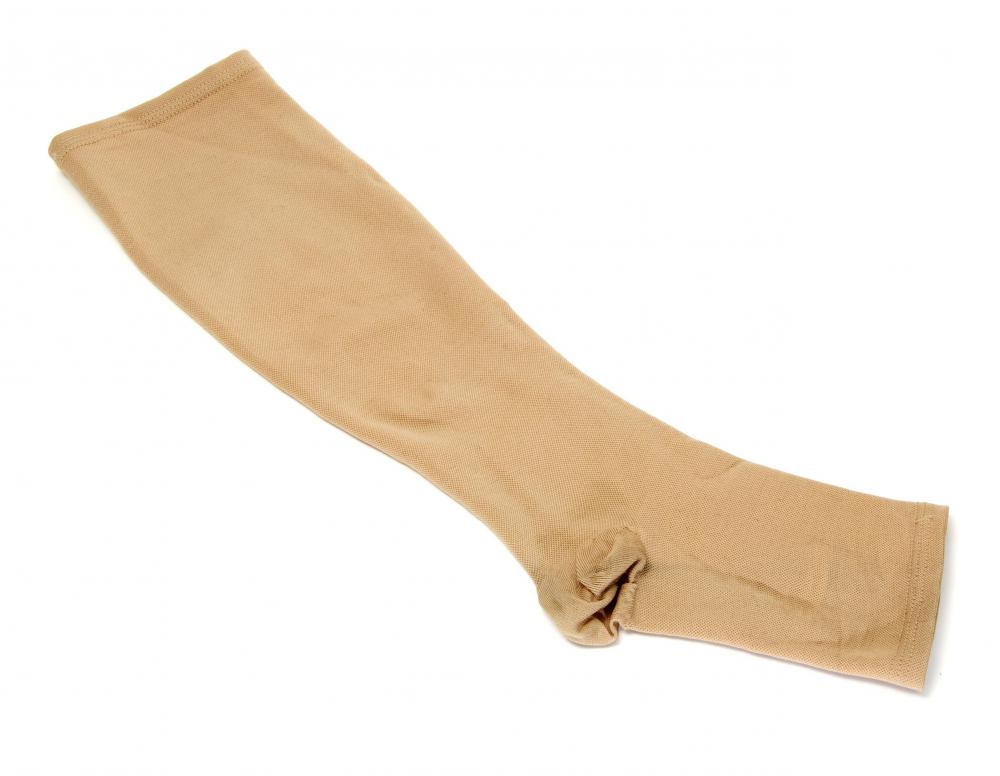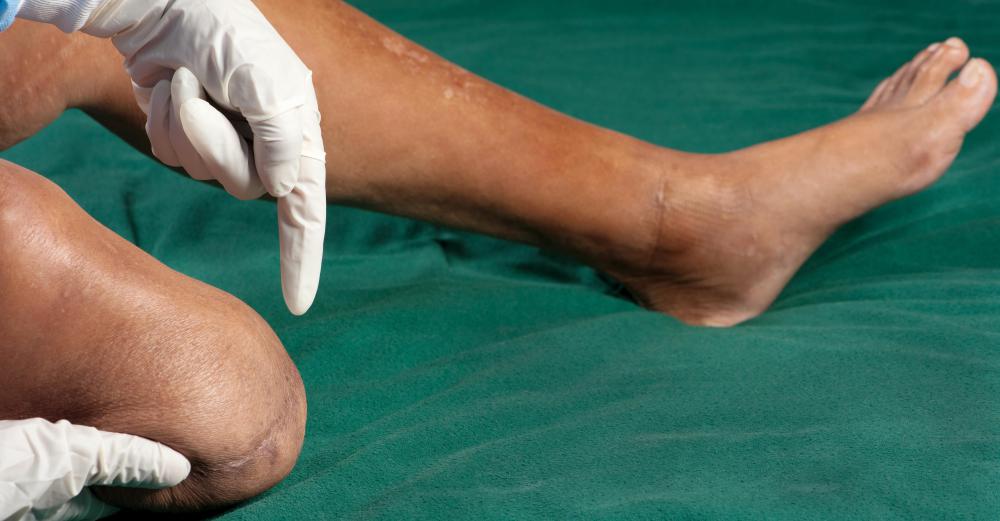At TheHealthBoard, we're committed to delivering accurate, trustworthy information. Our expert-authored content is rigorously fact-checked and sourced from credible authorities. Discover how we uphold the highest standards in providing you with reliable knowledge.
What is Klippel-Trenaunay-Weber Syndrome?
Klippel-Trenaunay-Weber syndrome is a congenital condition that is diagnosed by identifying three characteristics: a birthmark or deep red mark on the skin; the development of very soft skin in one or more limbs; and the presence of varicose veins. Hypertrophy, or significant enlargement, of a limb occurs in patients as the syndrome progresses. Klippel-Trenaunay-Weber syndrome was first recognized by doctors Maurice Klippel and Paul Trenaunay in 1900. Seven years later, Dr. Frederick Parkes-Weber discovered similar symptoms in some of his patients, and the name Klippel-Trenaunay-Weber syndrome was created to give a name to these symptoms.
The syndrome is congenital, which means that it is apparent at birth. Unlike other congenital syndromes, this one is not selective of any gender or race, though in females tachycardia, or increased heart rate, is an increased risk. There is no cure for Klippel-Trenaunay-Weber syndrome.

Serious, even fatal results, can occur because of this syndrome. Heart failure can take place if the condition leads to problems between artery and vein connections. Such instances are known as the Parkes-Weber variant of Klippel-Trenaunay-Weber syndrome.
The mortality rate of the syndrome is around 1%, but the rate of morbidity, or incidence of problems caused by the syndrome is very high. Problems that Klippel-Trenaunay-Weber patients experience include those associated with blood flow and lymph flow. Because the blood, lymph, or combination of both can not flow properly it will collect in the affected limb. Pressure is created, which can cause a great deal of pain. Swelling often occurs, and infection and ulcers can set in if the swelling is not alleviated.

Though there is no cure for Klippel-Trenaunay-Weber syndrome, there are some methods of treatment available. Because the severity of the syndrome varies from one patient to the next, treatment is done on an individual and as-needed basis. Surgery is an option for some patients, and is referred to as debulking. Debulking is basically the removal of a tumor or ulcer. This is generally a temporary solution to the problems caused by Klippel-Trenaunay-Weber syndrome.

Other treatment options include amputation of an affected limb, though this is not a recommended procedure for most patients as it does not seem to help over time. Sclerotherapy is one that works for some patients. This treatment involves the use of chemical injections as opposed to surgery. The chemicals help create blood flow between arteries and veins.
Elevating an affected, swollen limb can help alleviate some of the pain caused by the collection of blood and lymph fluids. Compression therapy is also helpful. This involves the use of a compression garment on the swollen limb or limbs.
AS FEATURED ON:
AS FEATURED ON:















Discuss this Article
Post your comments